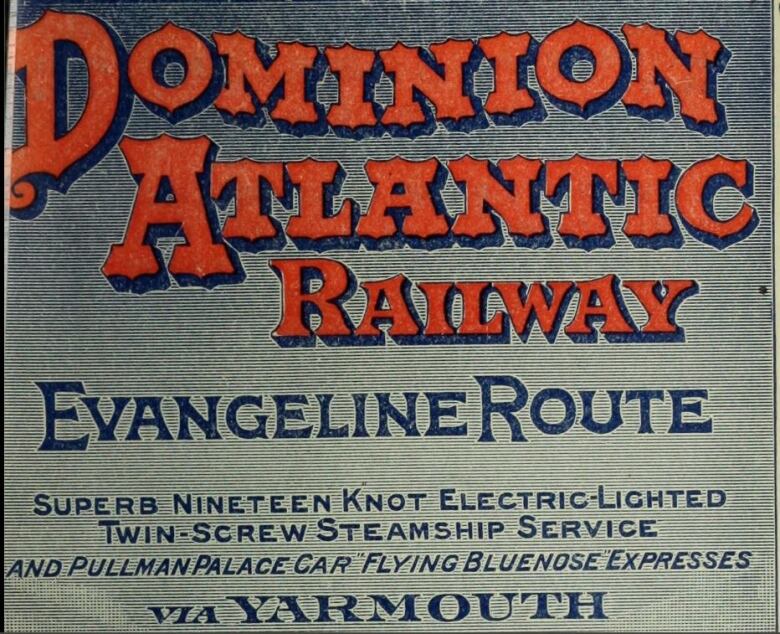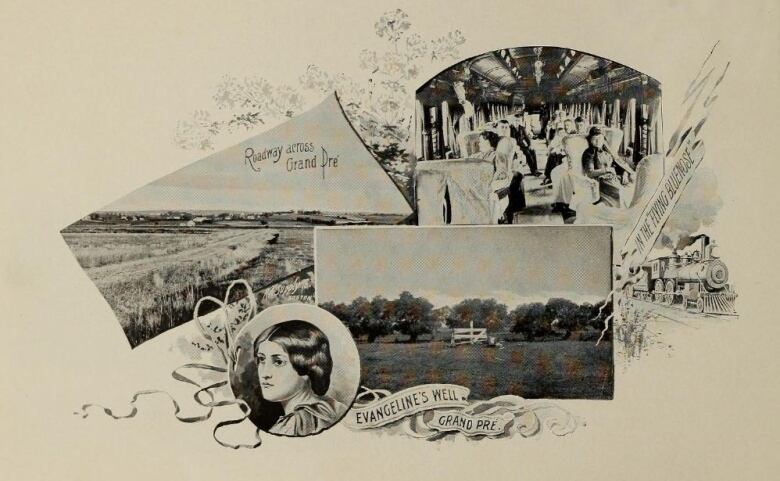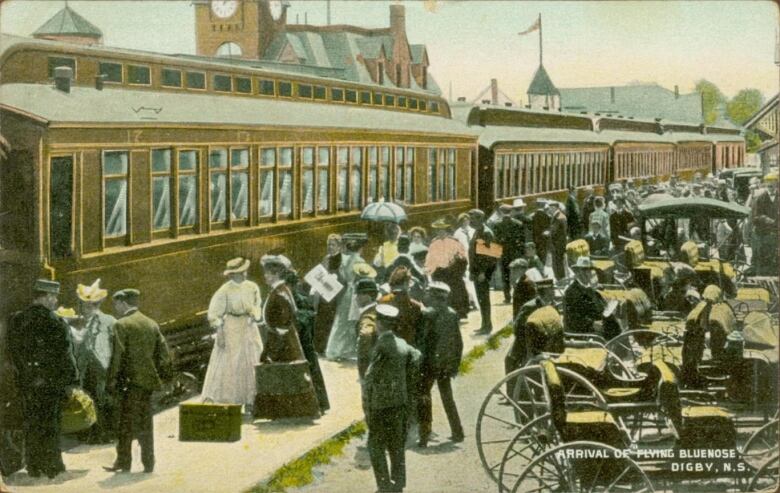Remembering when the 'stunning' Bluenose flew along the rails, not the water
Flying Bluenose Express transported tourists from Yarmouth to Halifax in style for 45 years

Three decadesbefore the iconic schooner Bluenose sailed the waters ofNova Scotia, the Flying Bluenose train was whisking passengers between Yarmouth and Halifax in style.
The summer luxury train started its run in 1891, becoming part of the Dominion Atlantic Railway fleetwhen the company was formed in 1894 by the merger of two regional railway companies.
At the time of the company's creation, Nova Scotia companies in the Annapolis Valley were capitalizing on a North American fascination with Acadian culture brought about by Henry Wadsworth Longfellow's wildly popular poem Evangeline, A Tale of Acadie.
The poem told the fictional story of Evangeline, who searches for her love, Gabriel, at the time of the expulsion of the Acadiansfrom their idyllic rural lands.
Well-heeled tourists

With well-heeled American tourists flocking to Nova Scotia to see the landscapeand villages described in the poem, Nova Scotia businesses lost no time in catering to their needs.
Thatincluded getting them to the site of the Grand Prsettlement, which was abandoned by then. It would later be developed into an early theme park by the DAR.
Tourists would board steamers in Boston and disembark in Yarmouth. They would then make their way toward the Land of Evangeline, on to Halifax,by steam locomotive.
Passengers making the journey could choose the regular train or the express train the Flying Bluenose.
The regular train was slower and made many stops. Butthe Flying Bluenose had far fewer stops, was luxuriously appointed and could travel the 400 kilometres from Yarmouth to Halifax in about eight hours.

Despite the luxurious appointments of the train, a1900 company brochure said the cost of the one-waytrip from Boston to Halifax by steamship and train was $8.50 or about $300 today.
Pretty exclusive
According to Gary Ness, professor emeritus at Acadia University and author of The Dominion Atlantic Railway: 1894-1994, the descriptions of luxury in the railway's brochures at the time were not just marketing hyperbole.
"If you went inside, what you would find is carpeting that was made by the most exclusive company in England, which back then had been in business for a couple of hundred years and is still going now," he said.
"The panelling inside was stunning and people could sit out on the back of the train on an observation deck and watch the scenery go by. They were pretty exclusive."
Ness said the tight integration of the ferries andthe trains weredesigned to promote tourism and to build the region as a tourism destination.

The Flying Bluenose had the first Pullman cars in Canada, Ness said, with the Haligonian and the Mayflower in the 1890s and two others, the Annapolis Royal and the Grand Pr, added in 1921.
Canadian Pacific Railway took over the Dominion Atlantic Railway in 1911 butdid not rebrand it, allowing it to keep its identity.
"It was extraordinary, to be honest with you," Ness said.
"I think the fact that the CP took it over and then began running it like a part of their system, explained a lot about that. CP was, of course, vested in the tourism business out West and saw it as a big moneymaker."
Railway stories
As with any iconic railway, there are stories attached to the once great train.
Some people arriving from the U.S.at the time were patronizing toward the locals and treated them as "country bumpkins," Ness said.
Sometimes the locals would get even.
Ness said he was told an unverifiablestory by retired railway workers he interviewed in the 1980s about an American tourist who was rude to the employees at the Yarmouth train station.
The tourist demanded to know where the express train was and the worker directed him to the train that was leaving about 20 minutes after the Flying Bluenose.
"The express train was called the Express Mail, that was sort of its official name, and of course, it stopped at every station between Yarmouth and Halifax," Ness chuckled.
"It put them on the milk run, stopping at every doghouse and chicken coop along the way."

The development of highways and the Great Depression marked the "death knell"for the Flying Bluenose and passenger train travel in general, Ness said.
People stopped travelling for pleasure during the Great Depression, Ness said, and highways allowed people to use their own cars to get around Nova Scotia.
End of an era
The age of fancy passenger trains came to an end and the Flying Bluenose was retired in 1936.
Passenger service on the route continued until 1989 when the federal government made major budget cutstothe rail network, Ness said.
In the 1910 travel guide Vacation Days in Nova Scotia, written by Thomas F.Anderson and published by the Dominion Atlantic Railway, the train is described asa household name throughout the U.S.and Canada.
"Each of these trains is as luxurious a flyer as modern science can make it, and in the Pullman Palace Cars the traveler will find everything that makes traveling by rail a pleasure," the author wrote.
Though the description of the train's fame in the book may have been exaggerated, Ness said the train would certainly have been well known and recognized as a significant "jewel in the crown" of the railway and Nova Scotia atthat time.













_(720p).jpg)


 OFFICIAL HD MUSIC VIDEO.jpg)
.jpg)



























































































